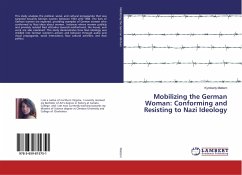In early 1945 the war had come home for Nazi Germany. On 12 January, the Red Army launched a major offensive in the East and broke the German lines. In East Prussia, the easternmost province of the Third Reich, no civilian evacuation plan had been prepared. More than a million ethnic Germans, mostly women, children and the elderly, attempted to escape the encirclement of the Red Army. They left their houses on horse carts or on foot, in the bitter cold of the Eastern European winter. How did the Nazi welfare organizations deal with this mass of refugees? Could the lives of thousands of German civilians have been saved? This book analyzes one of the most unexplored crimes that the Nazi regime perpetrated against its own population at the end of the Second World War.
Bitte wählen Sie Ihr Anliegen aus.
Rechnungen
Retourenschein anfordern
Bestellstatus
Storno








